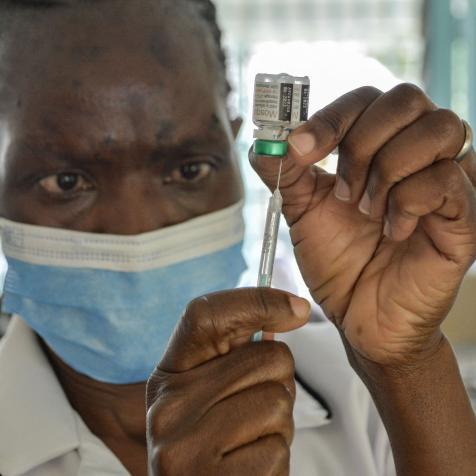
Shutterstock
Positive Lightning Is a Rare, Super-Deadly Form of Lightning
These lightning bolts are 10 times stronger than negative lightning.
There's nothing like watching a raging thunderstorm from the comfort of a warm room. The constant thrum of the pouring rain, the occasional explosion of thunder, and, of course, the blinding flashes of lightning that accompany them. Just thank your lucky stars you aren't out there. Most of those flashes are what you'd call negative lightning. But if it's positive lightning that explodes outside, then you're in serious trouble.

Shutterstock
Positive and Negative, Ups and Downs
Before we get into the difference between positive and negative lightning, let's talk about how lightning works in the first place. Scientists are still debating the details of this process, but here's the leading theory: Thunderclouds are filled with tiny bits of ice that collide and knock away each other's electrons. Some ice particles lose electrons, and others gain them — the former gain a positive charge, the latter a negative one. The positive particles then tend to gather toward the top of the cloud, and the negative ones gather at the bottom. What happens next is literally a giant burst of static electricity, just like the stuff that sparks from your fingers on a dry, cold day. As the charge grows larger on both sides, an exchange of energy is inevitable. Eventually, a bolt of electrons is going to leap from the negative side to the positive side and even things out a bit.
Most of the time, that lightning stays between the upper and lower parts of the cloud. But the lightning you see when a storm rolls through blasts its electrons towards the ground instead, as the negatively charged water particles toward the bottom of the cloud interact with the earth. When a negative charge is transferred from a cloud to the ground, it's known as negative lightning, and it makes up about 90 to 95 percent of all the lightning you ever see.
By contrast, positive lightning happens because of that positive charge that builds up at the top of the cloud. Because an ordinary storm cloud keeps negatively charged particles between the positively charged particles and the ground, positive lightning doesn't usually happen unless there's a strong wind to move the negative charge out of the way, or once most of the storm has cleared. In this case, the electrons have a much greater distance to travel. When they do, watch out! A negative bolt produces about 300 million volts and 30,000 amps of electricity — a positive one produces about a billion volts and 300,000 amps.
A Bolt from the Blue
Even though fatal lightning strikes are relatively rare and positive lightning makes up only five percent of all lightning strikes, positive lightning is a lot more deadly than negative lightning. It isn't just raw power that sets positive lightning bolts apart. They're also a lot longer than their negative cousins. Positive lightning can strike up to 20 or 30 miles (32 to 48 kilometers) away from their storm, and generally happen as the worst is dying down. You might never expect it.
Still, you're not likely to succumb to a lightning strike, positive or negative — only 16 people in the United States did in all of 2017. Just remember, the next time it seems like the storm has passed you by, you might want to wait it out a bit before you leave your safe haven.
This article first appeared on Curiosity.com.


















